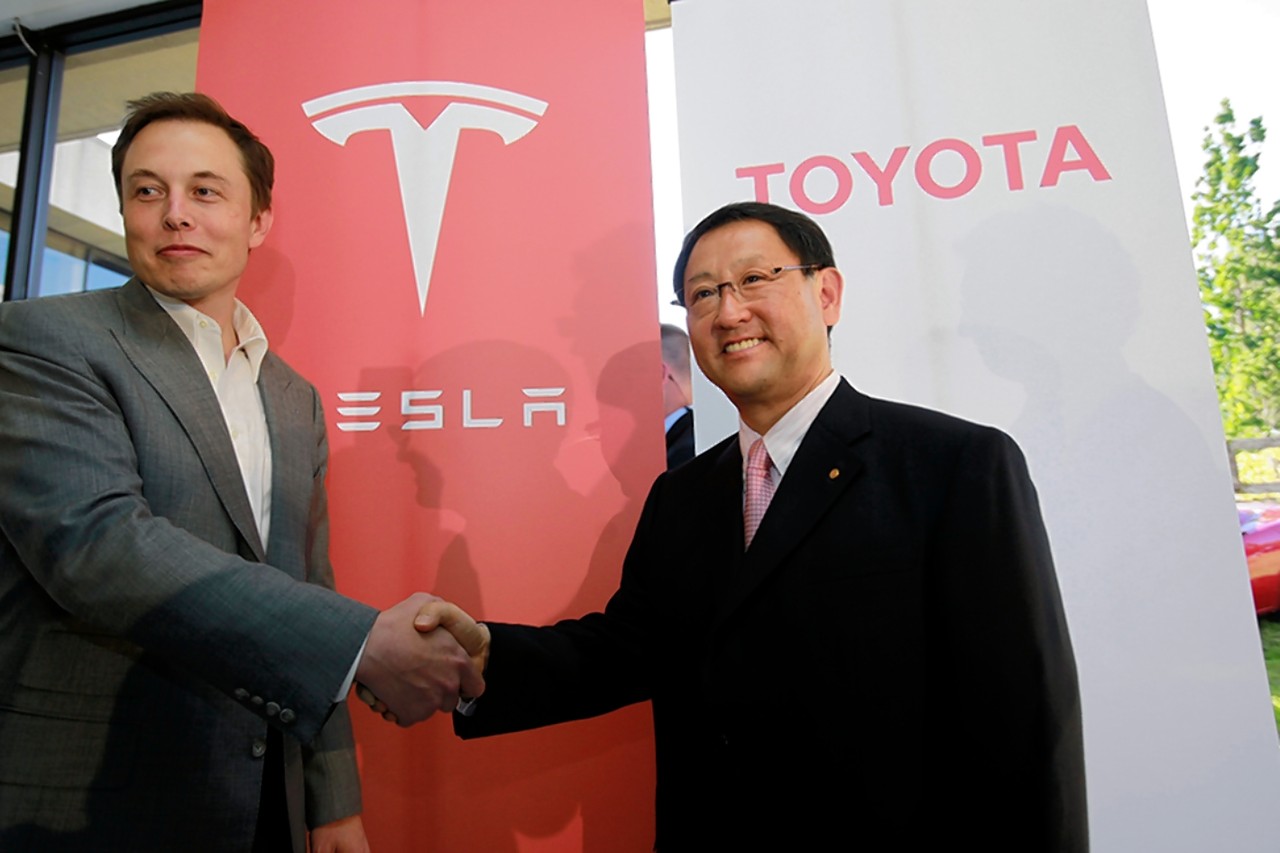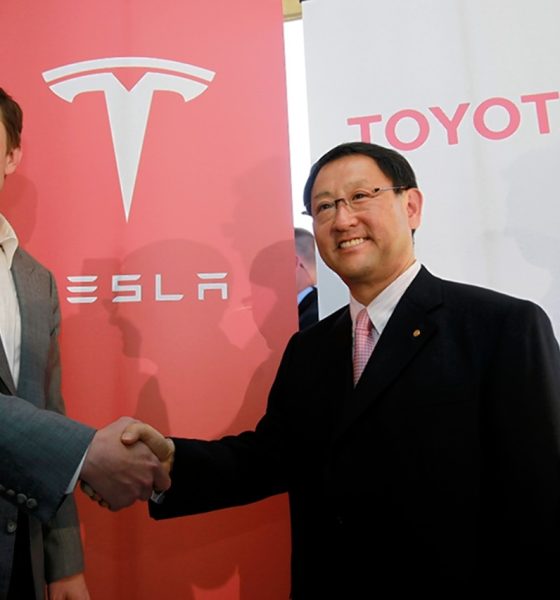

News
10,000 Toyota drivers sign petition urging company to commit to EVs: ‘Put our future before your profits’
Over 10,000 Toyota drivers have signed a petition with over 110,000 signatures urging the Japanese car maker to embrace electrification efforts and stop “lobbying to prevent electric vehicle mandates and clean air laws.”
10,500 of the 110,000 signatures come from current Toyota customers who are displeased with the company’s lack of commitment to developing sustainable powertrains. Toyota, which pushed against mandates for zero-emissions guidelines by 2035 in the past, committed to a 100 CO2 reduction in Europe by 2035. However, InfluenceMap analysts have stated Toyota is working harder than any other automotive company to stagnate progress on electric vehicles. It plans for only 14 percent of its total production to be electrified by the end of the decade. Toyota would miss its commitments to the Paris Agreement.
In November, InfluenceMap listed Toyota as the third-most negative and influential company against climate policies, following only ExxonMobil and Chevron. A month later, Toyota announced its plans to transition a minimum of 50 percent of its vehicles in Western Europe to zero-emissions by 2030:
“Moving beyond 2030, we expect to see further ZEV demand acceleration, and Toyota will be ready to achieve 100% CO2 reduction in all new vehicles by 2035 in Western Europe, assuming that sufficient electric charging and hydrogen refueling infrastructures are in place by then, together with the renewable energy capacity increases that will be required.” – Matt Harrison, President & CEO Toyota Motor Europe.
It is not up for much debate whether Toyota was committed to EVs a year ago because their plans simply did not include a dedicated lineup of sustainable vehicles. Instead, Toyota focused on hydrogen fuel cell powertrains.
Despite Toyota making changes to its EV plans and even unveiling the new bZ4X in mid-April, owners are still not wholly convinced of the company’s commitments and are urging the automaker to take a more serious tone when it comes to electrified options.
Toyota officially launches the bZ4X, its first full EV in nearly a decade
On a petition titled “Toyota is Fueling the Climate Crisis,” 110,044 people have signed as a recognition of their discontent with the company’s EV commitments. InfluenceMap’s latest review still has Toyota as the top carmaker lobbying against ambitious climate and clean air laws.
“Laggard automakers, such as Toyota (D) and Nissan (D+), which are forecast to have the lowest percentage of zero-emissions fleet-wide vehicle production in 2029 (14% and 22% respectively), also have the most negative climate policy engagement,” the report said.
Amongst the signees, comments regarding the company’s relatively lackluster plans have catalyzed a number of owners to consider axing the company altogether if it doesn’t make a more solidified commitment to sustainability. “We own a Prius and a Corolla and are loyal Toyota customers, however, we are disappointed and upset that Toyota is not supporting a zero-emissions target in the EU,” one person who signed the petition said. “Please put our future before your profits and support the EU emissions goals. Otherwise, many loyal customers like us will stop buying Toyotas and move to other brands that are more environmentally responsible.”
“I drive a Prius, and I am telling you to stop lobbying against extending our use of fossil fuels…You must realize you are ruining the future of our children. I will sell your car if you persist in this idiocy,” another comment said.
Toyota continues to put out EV production projections, which are lofty and, as the world’s largest car manufacturer, seem to be considerable. However, Toyota still maintains the fastest way to reduce CO2 emissions is through hybrid vehicles and not rapid electrification. Toyota has massive plans to expand to around 70 electrified models by 2025, but only 15 of these will be fully electric.
Seven of the fifteen will feature the bZ brand moniker. “his diverse portfolio of electrified products will help propel Toyota toward its goal of carbon neutrality by 2050,” the company said in April. “Globally, Toyota has put more than 20 million electrified models on the road – with a CO2 emissions reduction effect equivalent to the CO2 emissions reduction of over 5.5 million BEVs. Over the next nine years, Toyota will invest $70+ billion in electrified vehicles as a whole with the target to launch 3.5 million BEVs globally in 2030.”
I’d love to hear from you! If you have any comments, concerns, or questions, please email me at joey@teslarati.com. You can also reach me on Twitter @KlenderJoey, or if you have news tips, you can email us at tips@teslarati.com.

News
Tesla FSD fleet is nearing 7 billion total miles, including 2.5 billion city miles
As can be seen on Tesla’s official FSD webpage, vehicles equipped with the system have now navigated over 6.99 billion miles.

Tesla’s Full Self-Driving (Supervised) fleet is closing in on almost 7 billion total miles driven, as per data posted by the company on its official FSD webpage.
These figures hint at the massive scale of data fueling Tesla’s rapid FSD improvements, which have been quite notable as of late.
FSD mileage milestones
As can be seen on Tesla’s official FSD webpage, vehicles equipped with the system have now navigated over 6.99 billion miles. Tesla owner and avid FSD tester Whole Mars Catalog also shared a screenshot indicating that from the nearly 7 billion miles traveled by the FSD fleet, more than 2.5 billion miles were driven inside cities.
City miles are particularly valuable for complex urban scenarios like unprotected turns, pedestrian interactions, and traffic lights. This is also the difference-maker for FSD, as only complex solutions, such as Waymo’s self-driving taxis, operate similarly on inner-city streets. And even then, incidents such as the San Francisco blackouts have proven challenging for sensor-rich vehicles like Waymos.
Tesla’s data edge
Tesla has a number of advantages in the autonomous vehicle sector, one of which is the size of its fleet and the number of vehicles training FSD on real-world roads. Tesla’s nearly 7 billion FSD miles then allow the company to roll out updates that make its vehicles behave like they are being driven by experienced drivers, even if they are operating on their own.
So notable are Tesla’s improvements to FSD that NVIDIA Director of Robotics Jim Fan, after experiencing FSD v14, noted that the system is the first AI that passes what he described as a “Physical Turing Test.”
“Despite knowing exactly how robot learning works, I still find it magical watching the steering wheel turn by itself. First it feels surreal, next it becomes routine. Then, like the smartphone, taking it away actively hurts. This is how humanity gets rewired and glued to god-like technologies,” Fan wrote in a post on X.
News
Tesla starts showing how FSD will change lives in Europe
Local officials tested the system on narrow country roads and were impressed by FSD’s smooth, human-like driving, with some calling the service a game-changer for everyday life in areas that are far from urban centers.

Tesla has launched Europe’s first public shuttle service using Full Self-Driving (Supervised) in the rural Eifelkreis Bitburg-Prüm region of Germany, demonstrating how the technology can restore independence and mobility for people who struggle with limited transport options.
Local officials tested the system on narrow country roads and were impressed by FSD’s smooth, human-like driving, with some calling the service a game-changer for everyday life in areas that are far from urban centers.
Officials see real impact on rural residents
Arzfeld Mayor Johannes Kuhl and District Administrator Andreas Kruppert personally tested the Tesla shuttle service. This allowed them to see just how well FSD navigated winding lanes and rural roads confidently. Kruppert said, “Autonomous driving sounds like science fiction to many, but we simply see here that it works totally well in rural regions too.” Kuhl, for his part, also noted that FSD “feels like a very experienced driver.”
The pilot complements the area’s “Citizen Bus” program, which provides on-demand rides for elderly residents who can no longer drive themselves. Tesla Europe shared a video of a demonstration of the service, highlighting how FSD gives people their freedom back, even in places where public transport is not as prevalent.
What the Ministry for Economic Affairs and Transport says
Rhineland-Palatinate’s Minister Daniela Schmitt supported the project, praising the collaboration that made this “first of its kind in Europe” possible. As per the ministry, the rural rollout for the service shows FSD’s potential beyond major cities, and it delivers tangible benefits like grocery runs, doctor visits, and social connections for isolated residents.
“Reliable and flexible mobility is especially vital in rural areas. With the launch of a shuttle service using self-driving vehicles (FSD supervised) by Tesla in the Eifelkreis Bitburg-Prüm, an innovative pilot project is now getting underway that complements local community bus services. It is the first project of its kind in Europe.
“The result is a real gain for rural mobility: greater accessibility, more flexibility and tangible benefits for everyday life. A strong signal for innovation, cooperation and future-oriented mobility beyond urban centers,” the ministry wrote in a LinkedIn post.
News
Tesla China quietly posts Robotaxi-related job listing
Tesla China is currently seeking a Low Voltage Electrical Engineer to work on circuit board design for the company’s autonomous vehicles.

Tesla has posted a new job listing in Shanghai explicitly tied to its Robotaxi program, fueling speculation that the company is preparing to launch its dedicated autonomous ride-hailing service in China.
As noted in the listing, Tesla China is currently seeking a Low Voltage Electrical Engineer to work on circuit board design for the company’s autonomous vehicles.
Robotaxi-specific role
The listing, which was shared on social media platform X by industry watcher @tslaming, suggested that Tesla China is looking to fill the role urgently. The job listing itself specifically mentions that the person hired for the role will be working on the Low Voltage Hardware team, which would design the circuit boards that would serve as the nervous system of the Robotaxi.
Key tasks for the role, as indicated in the job listing, include collaboration with PCB layout, firmware, mechanical, program management, and validation teams, among other responsibilities. The role is based in Shanghai.
China Robotaxi launch
China represents a massive potential market for robotaxis, with its dense urban centers and supportive policies in select cities. Tesla has limited permission to roll out FSD in the country, though despite this, its vehicles have been hailed as among the best in the market when it comes to autonomous features. So far, at least, it appears that China supports Tesla’s FSD and Robotaxi rollout.
This was hinted at in November, when Tesla brought the Cybercab to the 8th China International Import Expo (CIIE) in Shanghai, marking the first time that the autonomous two-seater was brought to the Asia-Pacific region. The vehicle, despite not having a release date in China, received a significant amount of interest among the event’s attendees.








